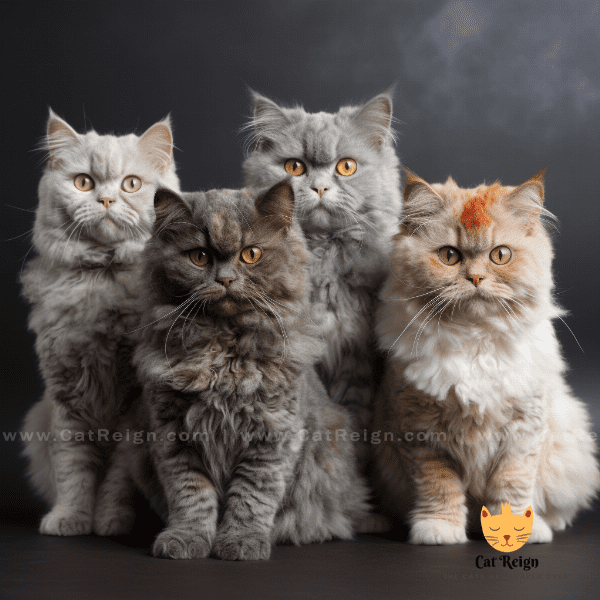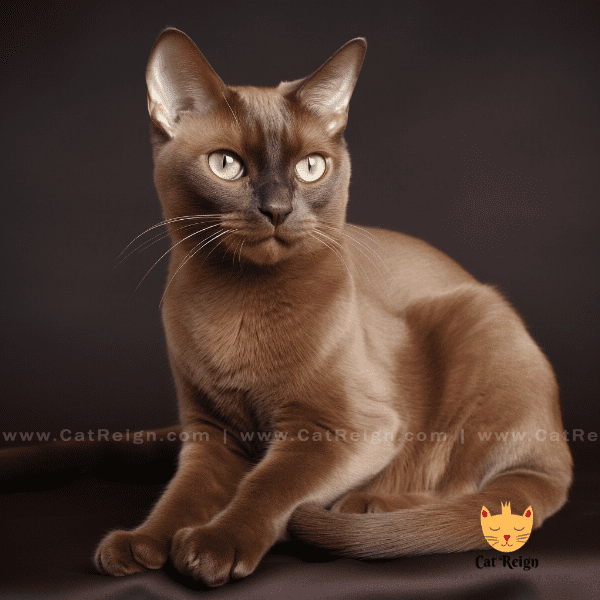Table of Contents
- What Are Oriental Cat Breeds?
- History and Origins of Oriental Cats
- Physical Characteristics of Oriental Cats
- Personality Traits of Oriental Cats
- Different Types of Oriental Cat Breeds
- How to Care for Your Oriental Cat
- Health Issues Common in Oriental Cats
- Training Your Oriental Cat: Tips and Techniques
- Oriental Cats and Their Relationship with Other Pets
- Finding the Perfect Oriental Cat for You
What Are Oriental Cat Breeds?
If you’re interested in felines, you’ve probably heard about Siamese cats. Well, Oriental Cat breeds are closely related to Siamese cats, but there’s much more to them than just their ancestry.
Defining Characteristics
Oriental cats are known for their distinctive physical and personality traits. They are medium-sized cats with sleek, elegant bodies and almond-shaped eyes. They are known for their vocal nature and can be quite chatty with their owners.
Colors and Coat Types
Oriental cats come in a wide variety of colors and coat types. They can have solid-colored coats or patterns like stripes, spots, or blotches. Some of the most common coat colors for Oriental cats are black, white, red, cream, and blue.
Origins and History
The history of Oriental cats is closely tied to the history of Siamese cats. The breed originated in Thailand (formerly known as Siam) and was brought to Europe in the late 1800s. From there, they were selectively bred to create new colors and patterns. The Oriental Shorthair breed was officially recognized by cat registries in the 1970s.
Comparison with Siamese Cats
Although Oriental cats and Siamese cats share a common ancestor, there are some differences between the two breeds. Siamese cats have a more angular body shape and a narrower head than Oriental cats. They are also more vocal and have a louder meow.
If you’re considering getting an Oriental cat, it’s important to understand their unique characteristics and history. The more you know about these felines, the better equipped you will be to provide them with the love and care they need to thrive.
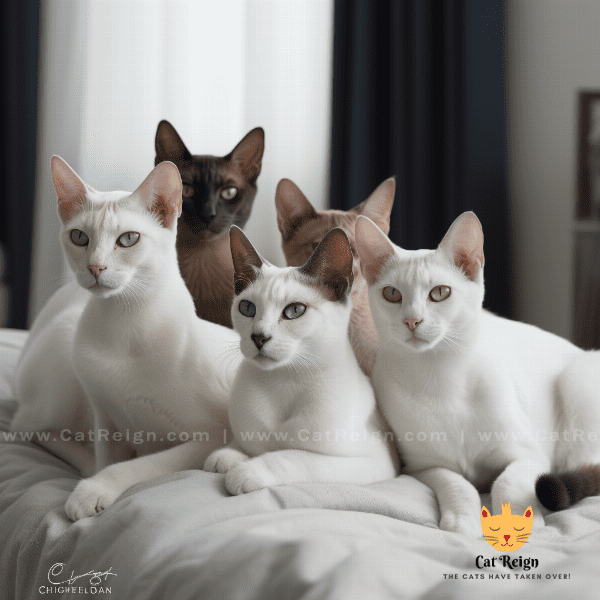
History and Origins of Oriental Cats
The history of Oriental cats is closely linked to the history of Siamese cats, which are believed to have originated in Thailand (formerly known as Siam) in the 14th century. The Siamese cat was highly valued by the royal family in Thailand and was often given as a gift to visiting dignitaries.
The Journey to Europe
In the late 1800s, Siamese cats were brought to Europe by British and Dutch traders. They quickly became popular as exotic pets among European aristocracy. However, the Siamese cats brought to Europe were significantly different from the Siamese cats in Thailand. They had a more slender and elongated body, as well as a more pronounced wedge-shaped head.
The Development of Oriental Cat Breeds
In the mid-20th century, breeders began to selectively breed Siamese cats to create new coat colors and patterns. This led to the development of the Oriental Shorthair breed, which was recognized by cat registries in the 1970s.
The Oriental Shorthair is a cross between a Siamese cat and other breeds such as the British Shorthair and the Abyssinian. These cats have a more rounded head and a slightly broader body than Siamese cats. They also come in a wide variety of colors and patterns, including solid colors and tabby patterns.
The Oriental Longhair
In addition to the Oriental Shorthair, there is also an Oriental Longhair breed. These cats have a longer, silkier coat than the shorthair variety and are also available in a range of colors and patterns. The Oriental Longhair is the result of breeding the Oriental Shorthair with other long-haired breeds such as the Balinese and the Turkish Angora.
In conclusion, the Oriental cat breeds have a fascinating history that is closely intertwined with the Siamese cat. Over time, breeders have worked to create a diverse range of cats with unique colors, patterns, and personalities. If you’re looking for a cat with a rich history and distinctive traits, an Oriental cat may be the perfect choice for you.
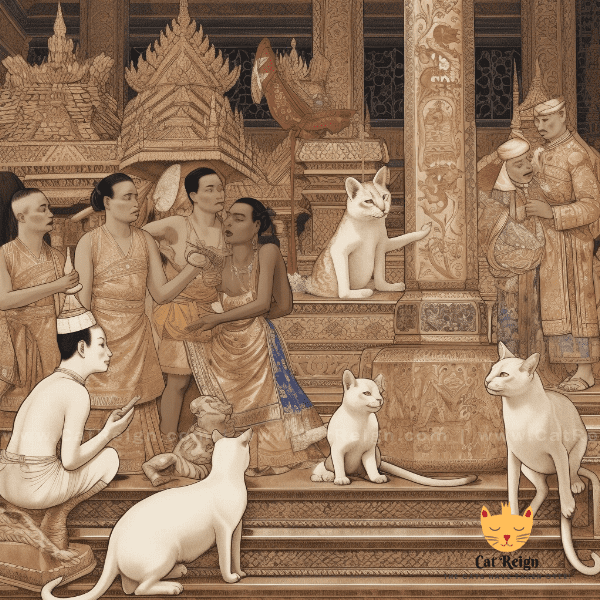
Physical Characteristics of Oriental Cats
Oriental cats are medium-sized cats with a sleek, muscular build. They have a long, graceful neck and a narrow, wedge-shaped head. Here are some more specific physical characteristics of Oriental cats:
Coat
The coat of an Oriental cat is short, fine, and glossy. They come in a wide variety of colors and patterns, including solid colors, bi-colors, and tabby patterns. Oriental Longhairs have a longer, silkier coat than Oriental Shorthairs.
Eyes
One of the most distinctive features of Oriental cats is their almond-shaped eyes. They are typically green, but can also be blue, gold, or odd-eyed (one green eye and one blue eye).
Ears
Oriental cats have large, pointed ears that are set wide apart on their head. They are very expressive and often tilt their ears forward when they are interested or curious about something.
Body
Oriental cats have a long, slender body with a fine-boned structure. They have a high, arched back and a long, thin tail. They are known for their athletic ability and love to climb and play.
Weight
Oriental cats typically weigh between 5 and 10 pounds, with males being slightly larger than females.
Overall Appearance
Overall, Oriental cats have a sleek, elegant appearance that is both striking and distinctive. Their unique physical characteristics make them a popular breed among cat lovers.
If you’re considering adopting an Oriental cat, it’s important to understand their physical characteristics and specific care needs. By providing your Oriental cat with the proper nutrition, exercise, and grooming, you can help ensure they live a healthy, happy life.
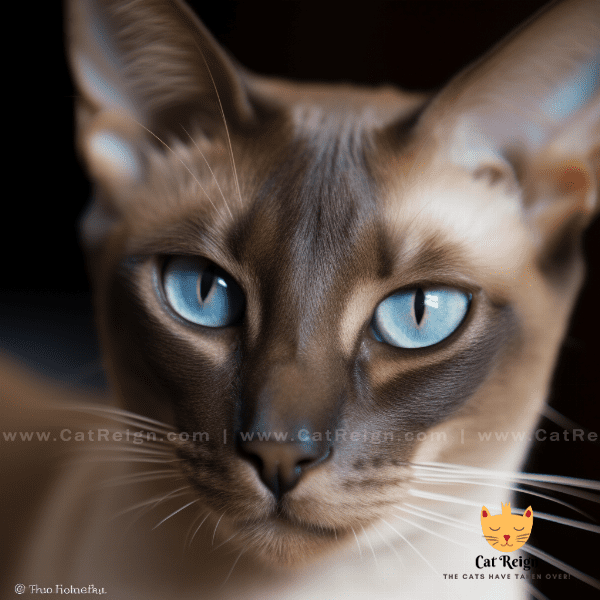
Personality Traits of Oriental Cats
Oriental cats are known for their outgoing, affectionate personalities. They are highly intelligent and love to play, making them a great choice for families with children or other pets. Here are some specific personality traits that are common among Oriental cats:
Vocalization
Oriental cats are known for their vocal nature and can be quite chatty with their owners. They have a wide range of vocalizations, from soft meows to loud, attention-grabbing yowls.
Affectionate
Oriental cats are very affectionate and enjoy spending time with their owners. They are often described as “velcro cats” because they like to be near their owners at all times.
Intelligent
Oriental cats are highly intelligent and love to learn new things. They are known for their problem-solving skills and can be trained to do a variety of tricks and behaviors.
Playful
Oriental cats have a playful nature and love to play with toys and interact with their owners. They are known for their love of climbing and jumping, so providing them with plenty of opportunities to exercise and explore is important.
Curious
Oriental cats are very curious and like to explore their environment. They are known for their love of high places, so providing them with a tall cat tree or other climbing structure is important.
Overall, Oriental cats have a delightful personality that makes them a great companion for any cat lover. They are intelligent, affectionate, and playful, and thrive in homes where they can receive plenty of love and attention.
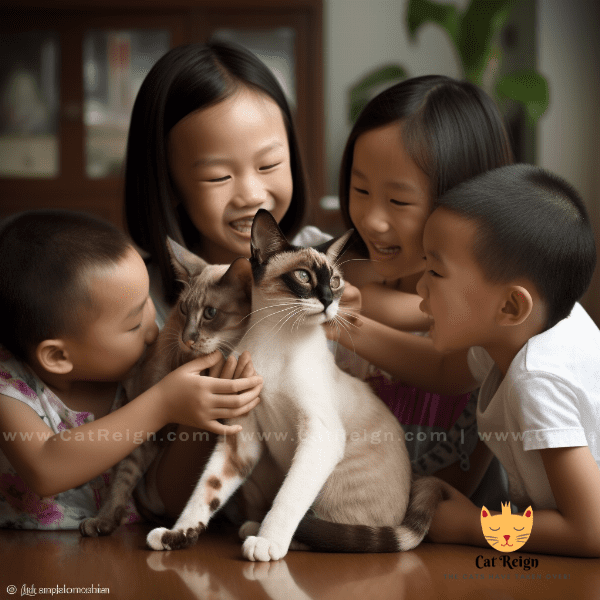
Different Types of Oriental Cat Breeds
There are several different types of Oriental cat breeds, each with their own unique characteristics and personalities. Here are some of the most popular Oriental cat breeds:
Oriental Longhair
The Oriental Longhair is a long-haired version of the Oriental Shorthair. They have a silky, medium-length coat and come in a variety of colors and patterns. They are affectionate, intelligent, and love to climb and play.
Siamese
Although Siamese cats are technically a separate breed, they are closely related to Oriental cats and share many similarities in terms of personality and appearance. Siamese cats have a more angular body shape and a more pronounced wedge-shaped head than Oriental cats. They are also more vocal and have a louder meow.
Balinese
The Balinese is a long-haired breed that is closely related to the Siamese and Oriental breeds. They have a long, silky coat and a distinctive plumed tail. They are intelligent, affectionate, and make great companions for families.
Javanese
The Javanese is a cross between the Siamese and the Balinese breeds. They have a medium-length coat that is silky and smooth. They are intelligent, playful, and enjoy interacting with their owners.
Colorpoint Shorthair
The Colorpoint Shorthair is a breed that is closely related to the Siamese and the Oriental breeds. They have a short, fine coat that comes in a variety of colors, including seal, chocolate, blue, and lilac. They are intelligent, outgoing, and love to play.
Overall, the different types of Oriental cat breeds offer a wide range of unique personalities and characteristics. Whether you prefer a short-haired or long-haired cat, a talkative or quiet cat, there is an Oriental cat breed that is perfect for you.
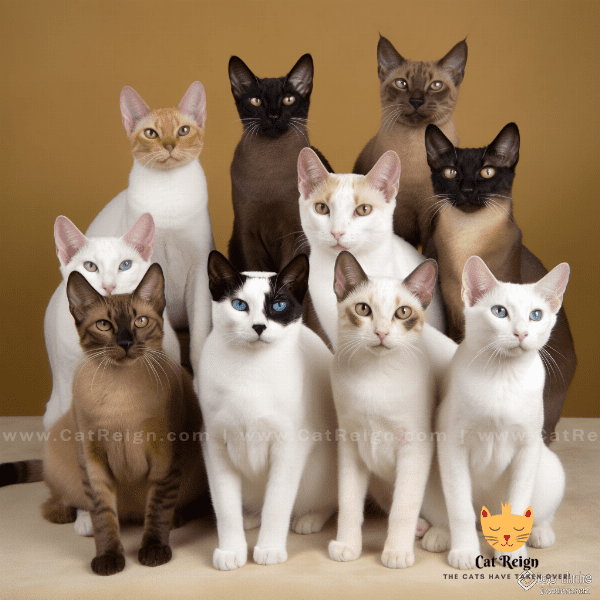
How to Care for Your Oriental Cat
If you’re considering adopting an Oriental cat, it’s important to understand the specific care needs of this breed. Here are some tips for caring for your Oriental cat:
Grooming
Oriental cats have short, fine coats that are relatively low-maintenance. However, they do shed, so regular brushing is recommended to help remove loose hair and prevent hairballs. Oriental Longhairs require more frequent grooming to prevent matting and tangles.
Nutrition
Feeding your Oriental cat a high-quality, balanced diet is important for their overall health and wellbeing. Be sure to choose a cat food that is specifically formulated for their age, activity level, and health needs.
Exercise
Oriental cats are active and love to play, so providing them with plenty of opportunities to exercise and play is important. Interactive toys, climbing structures, and puzzle feeders are great ways to keep your Oriental cat entertained and mentally stimulated.
Health Care
Regular veterinary checkups are important for keeping your Oriental cat healthy. They should receive annual vaccinations, parasite prevention, and dental care as needed. It’s also important to keep their litter box clean to prevent urinary tract infections.
Environmental Enrichment
Oriental cats thrive in homes where they can explore and interact with their environment. Providing them with plenty of vertical space, scratching posts, and hiding places can help keep them entertained and reduce stress.
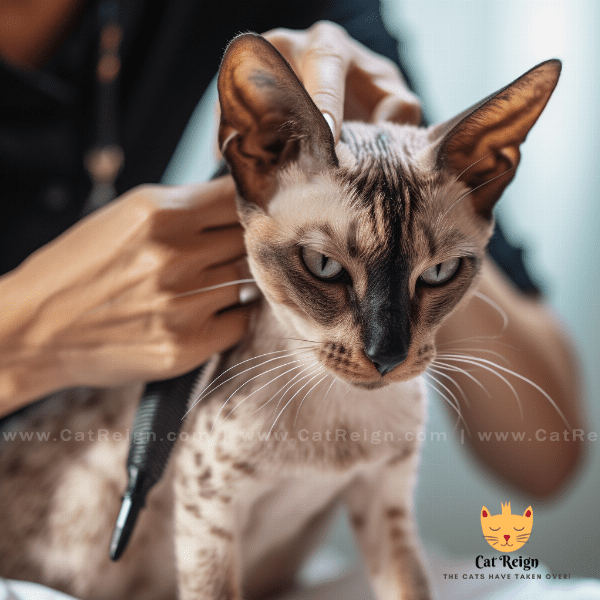
Health Issues Common in Oriental Cats
Like all cat breeds, Oriental cats are prone to certain health issues. By understanding these health concerns, you can take steps to keep your Oriental cat healthy and prevent or manage any health issues that may arise.
Dental Disease
Dental disease is a common issue in Oriental cats, as well as in other cat breeds. Regular dental care, including toothbrushing and dental cleanings, can help prevent dental disease and keep your cat’s teeth and gums healthy.
Urinary Tract Issues
Oriental cats are prone to urinary tract issues, such as urinary tract infections and blockages. These issues can be caused by a variety of factors, including diet and stress. Providing your cat with a high-quality, balanced diet and plenty of environmental enrichment can help prevent urinary tract issues.
Respiratory Issues
Oriental cats are also prone to respiratory issues, such as asthma and allergies. These issues can be triggered by environmental factors, such as dust or smoke. Keeping your home clean and smoke-free can help prevent respiratory issues in your Oriental cat.
Eye Problems
Oriental cats are prone to eye problems, such as conjunctivitis and corneal ulcers. These issues can be caused by a variety of factors, including allergies and infections. Regular eye exams and prompt treatment of any eye issues can help prevent more serious complications.
Heart Issues
Some Oriental cats may be prone to heart issues, such as hypertrophic cardiomyopathy (HCM). Regular veterinary checkups and screenings can help detect any heart issues early and prevent more serious complications.
Overall, caring for an Oriental cat involves monitoring their health closely and seeking prompt veterinary care for any health issues that arise. With proper care and attention, your Oriental cat can live a long, healthy life.
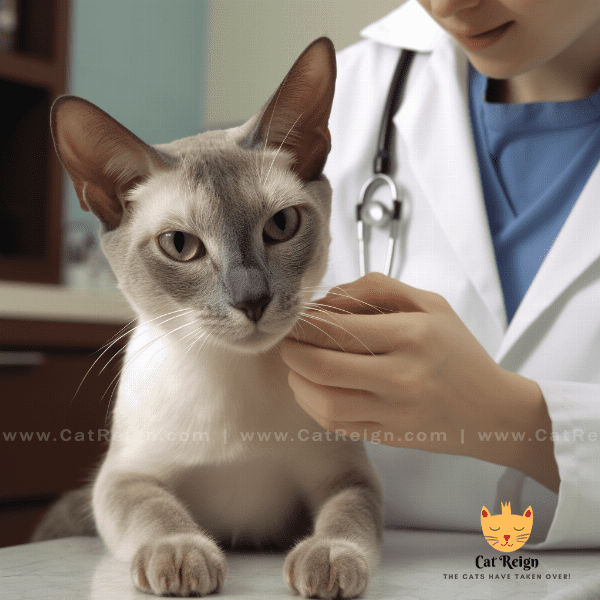
Training Your Oriental Cat: Tips and Techniques
Oriental cats are highly intelligent and love to learn new things, making them a great breed for training. Here are some tips and techniques for training your Oriental cat:
Clicker Training
Clicker training is another effective training technique for Oriental cats. This involves using a clicker to signal to your cat that they have done something correctly, followed by a reward such as a treat or praise. Clicker training can be used to teach a variety of behaviors, such as sitting, jumping, and walking on a leash.
Training Games
Training games can be a fun and effective way to train your Oriental cat. These games can include activities such as hide-and-seek, fetch, and puzzle toys. Training games help to keep your cat engaged and mentally stimulated, which can improve their overall behavior and mood.
Leash Training
Oriental cats can be trained to walk on a leash, which can be a great way to provide them with exercise and outdoor time while keeping them safe. Leash training involves gradually introducing your cat to wearing a harness and leash, and then slowly increasing the amount of time they spend outside.
Avoid Punishment
Punishing your Oriental cat for bad behavior is not an effective training technique. It can cause your cat to become fearful or aggressive, and may even make the behavior worse. Instead, focus on positive reinforcement and training techniques that encourage good behavior.
Training your Oriental cat can be a fun and rewarding experience for both you and your cat. By using positive reinforcement, training games, and other techniques, you can teach your cat new behaviors and strengthen your bond with them.
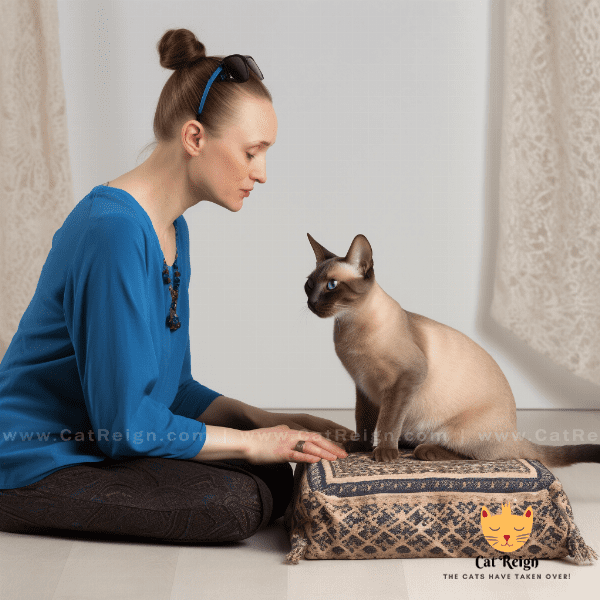
Oriental Cats and Their Relationship with Other Pets
Oriental cats are known for their outgoing, social nature, which can make them great companions for other pets. However, introducing a new pet to your Oriental cat requires careful planning and consideration. Here are some tips for introducing your Oriental cat to other pets:
Slow and Gradual Introduction
Introducing a new pet to your Oriental cat should be done slowly and gradually. This can help prevent territorial behavior and ensure that your pets feel safe and comfortable with each other. Start by allowing your pets to sniff each other through a closed door, and gradually increase their time together under close supervision.
Provide Separate Spaces
Providing separate spaces for your pets can also help prevent territorial behavior and reduce stress. Each pet should have their own food and water bowls, litter box, and sleeping area. This can help prevent competition for resources and reduce the likelihood of fights.
Supervision
Supervision is key when introducing a new pet to your Oriental cat. You should never leave your pets alone together until you are confident that they are comfortable with each other. Keep a close eye on their interactions, and be prepared to separate them if necessary.
.
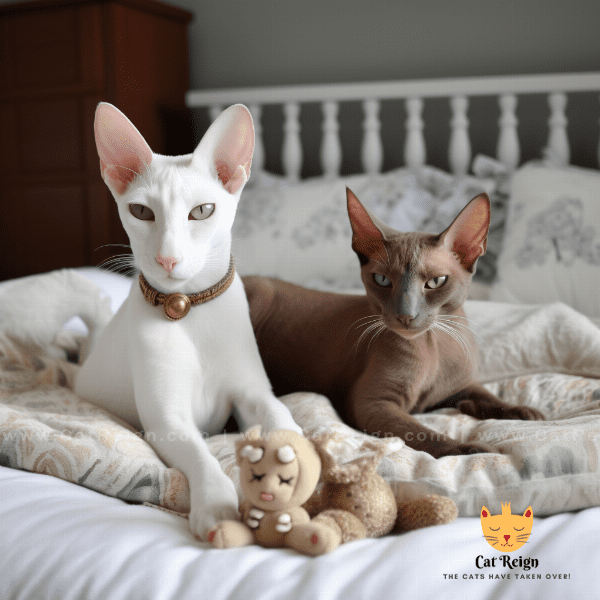
Finding the Perfect Oriental Cat for You
If you’re considering adopting an Oriental cat, there are several factors to consider to ensure that you find the perfect cat for your lifestyle and personality. Here are some tips for finding the perfect Oriental cat for you:
Research Breeds
Before adopting an Oriental cat, do your research on the different breeds and their characteristics. This can help you determine which breed is the best fit for your lifestyle and personality. Consider factors such as energy level, grooming needs, and personality traits.
Visit a Shelter
Visiting a shelter or rescue organization is a great way to meet Oriental cats and find the perfect match. Shelters often have a variety of cats available for adoption, and staff can help you find a cat that matches your preferences and lifestyle.
Meet the Cat
Before adopting an Oriental cat, it’s important to spend time with them and get to know their personality. Arrange a meet-and-greet with the cat to see how they interact with you and other pets. This can help you determine if the cat is the right fit for your home.
Consider Age
The age of the Oriental cat can also be an important factor to consider. Kittens require more attention and training, while older cats may be more settled and low-maintenance. Consider your lifestyle and preferences when deciding on the age of the cat you want to adopt.
Consider Adoption Fees
Adoption fees for Oriental cats can vary depending on the organization or shelter you adopt from. Be sure to consider the cost of adoption fees and any additional expenses, such as veterinary care or supplies, when making your decision.
By following these tips and considering your lifestyle and preferences, you can find the perfect Oriental cat to join your family. With proper care and attention, your Oriental cat can be a loving and loyal companion for many years to come.


